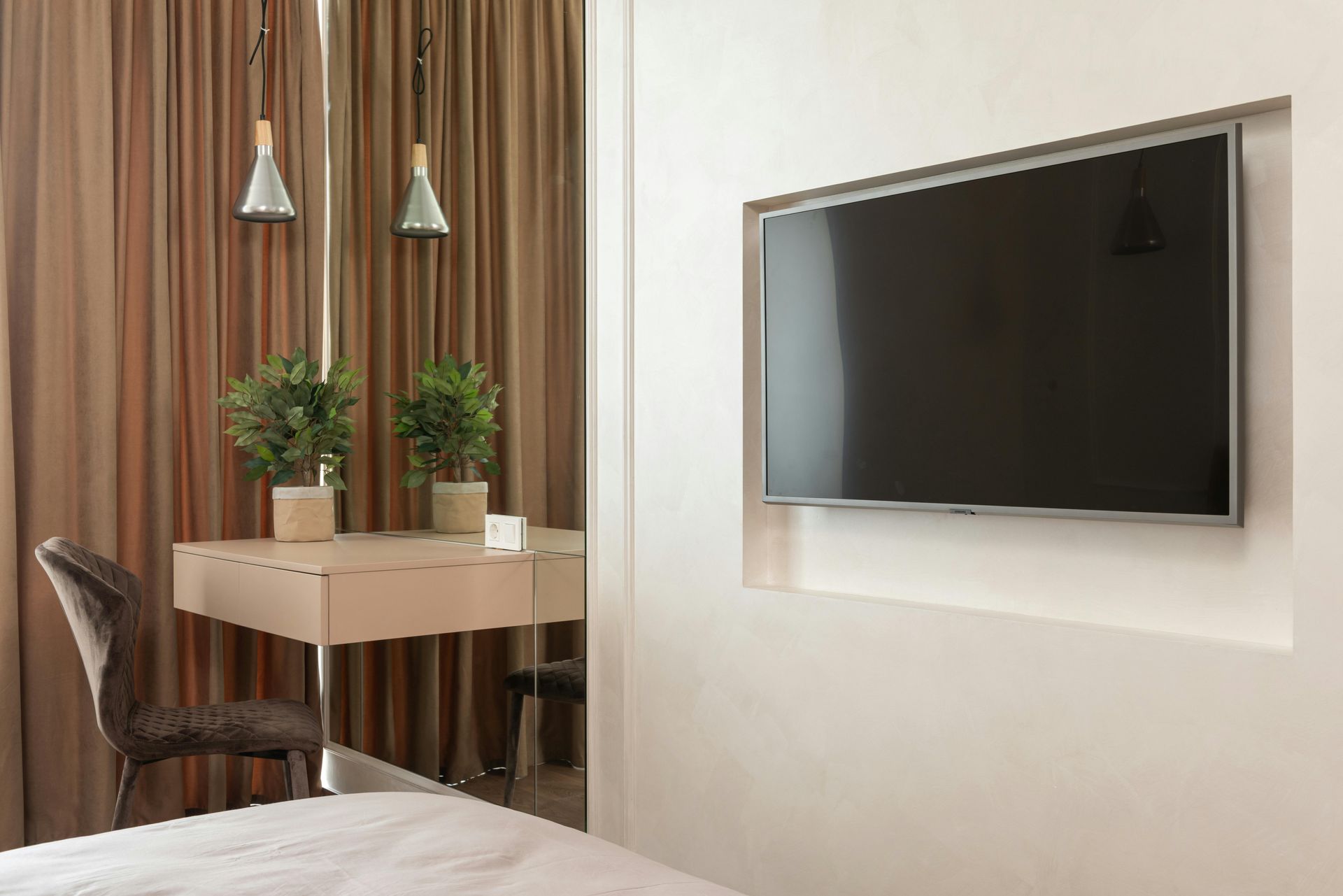Emerging Trends in the TV Mounting Industry: A Comprehensive Overview
The TV mounting industry has witnessed significant growth, with the market value estimated to reach USD 2022.2 million by 2028, showcasing a steady CAGR of 1.3%. This expansion is mirrored in the increasing demand for various types of tv mounts, including tv wall mount options and mounting tv services, across diverse applications from residential to commercial uses.
Understanding the trends shaping the tv wall mounting sector is crucial for stakeholders to navigate the market effectively. This article will delve into the evolution of tv mounting on wall practices, highlight key trends, and explore the technological advancements driving changes in the industry.
The Evolution of the TV Mounting Industry
The history of TV mounts traces back to industrial settings where bulky, heavy steel frames were the norm. However, with the advent of flat-panel TVs, the application of wall mounts expanded into commercial and residential environments, including medical facilities, schools, office buildings, restaurants, and homes. This shift not only diversified the use of TV mounts but also spurred innovation within the industry.
In 2002, Sanus Systems introduced a groundbreaking product, the VisionMount® VMPL, which was the first universal wall mount capable of supporting almost every large flat-panel TV available on the market at the time. This innovation was a significant leap forward, making TV mounting more accessible and versatile. The development of new wall-plate technology by Sanus Systems further enhanced the functionality and appeal of TV mounts. These plates, made from environmentally friendly materials, not only offered an increased strength-to-weight ratio but also featured an improved aesthetic appeal and corrosion resistance. The use of 6061-T6 aluminum alloy in these plates provided a tensile strength of 42,000 psi, ensuring durability and longevity.
The evolution of TV mounting technology continued with the introduction of more advanced features. Modern mounts now offer capabilities such as tilting, articulating, and rotating the TV set effortlessly, catering to the consumer's viewing preferences. Additionally, the design of TV mounts has become more streamlined, with some models allowing the TV to be positioned just a few inches—or even less than an inch—away from the wall, perfect for ultra-thin TV sets. This progression from bulky, industrial designs to sleek, versatile models illustrates the dynamic nature of the TV mounting industry and its response to technological advancements and consumer demands.
Key Trends Shaping the Future of TV Mounting
The global television mount market is poised for robust growth, driven by the escalating demand for flat-screen TVs and advanced home theater systems. Industry leaders like Milestone, Vogel's, and VideoSecu dominate the fixed TV wall mount segment, with innovations aimed at enhancing user experience and functionality. The market, valued at USD 1819.5 million in 2020, is projected to reach USD 2127.1 million by 2032, reflecting a growth trend fueled by both commercial and residential applications.
Market Segmentation and Regional Dynamics
- Type and Application: The market is segmented by materials such as Aluminum Alloy and Composite Materials, catering to diverse needs in commercial and residential settings.
- Geographical Reach: North America and Asia-Pacific are significant players, with the latter expected to hold the largest market share due to increased consumer spending and urbanization.
Emerging Innovations and Consumer Trends
Slim and Low-Profile Mounts: There is a noticeable shift towards slim and adjustable wall mounts, which are not only easy to install but also cater to the aesthetic and practical preferences of modern homes.
Curved TV Mounts: Innovations continue with the introduction of mounts specifically designed for curved TVs, enhancing the visual setup and complementing the sleek design of contemporary television sets.
These trends underscore a dynamic evolution in the TV mounting industry, where convenience, aesthetics, and advanced technology converge to redefine the viewing experience.
Challenges and Opportunities
Navigating the complexities of the TV mounting industry reveals a landscape filled with both challenges and opportunities that stakeholders must address to stay competitive and meet consumer demands. One significant hurdle is the technical knowledge required to safely and effectively mount different types of televisions. This expertise is not just about physical installation but also involves understanding optimal viewing angles and the intricacies of cable management. Moreover, the industry faces stringent regulatory requirements and the need for adequate insurance coverage, which can be daunting for new entrants and established players alike.
The market also presents substantial opportunities, particularly in enhancing customer satisfaction through unique selling propositions (USPs) that resonate with specific customer segments. For instance, offering customizable mounting solutions that consider the aesthetic and functional needs of various living spaces could serve as a compelling USP. Additionally, forming strategic partnerships with real estate agents, interior designers, and contractors could open up a consistent stream of referrals, thereby expanding business reach and brand recognition.
Cost considerations and installation challenges, such as finding the right stud or managing complex wiring systems, represent significant barriers for homeowners, which in turn creates a market for professional installation services. These services not only help in avoiding potential damage but also ensure that the mounting is performed with precision, thus enhancing safety and functionality. On the flip side, the industry can leverage technology to develop mounts that are easier to install and adjust, thereby reducing the overall complexity and cost of installation. This approach not only caters to the DIY market but also appeals to those preferring professional setup, thereby broadening the customer base.
The Role of Technology in Reshaping the Industry
Artificial intelligence (AI) has dramatically transformed the TV mounting industry by enhancing efficiency, precision, and customization. AI-powered robotic arms, for instance, facilitate precise and automated movements during the installation process, significantly reducing manual labor and the margin for error. Furthermore, AI algorithms play a crucial role in optimizing TV placement by calculating the ideal height, tilt, and distance from the viewer, which ensures an optimal viewing experience.
In addition to placement precision, AI technologies leverage computer vision and object recognition to determine the best locations for TV setups and effective cable management systems. This integration of AI extends to room acoustics, where AI analyzes audio dynamics to optimize speaker settings and enhance the surround sound experience. Moreover, real-time adjustments to TV settings based on ambient lighting conditions are now possible, thanks to these intelligent systems, ensuring the best possible picture quality at all times.
The industry's technological evolution is also evident in the advancements made by companies like Sanus Systems, which has introduced innovative wall-plate technology that offers a higher strength-to-weight ratio, reducing product weight while maintaining durability. This progress is reflective of a broader trend where major market players such as Legrand (Milestone), Ergotron, and LG continue to dominate, driving forward with innovations that cater to both aesthetic desires and functional requirements of modern entertainment systems.
Conclusion
The transformative journey of the TV mounting industry, from its nascent stages to the current landscape, mirrors the rapid advances in technology and changing consumer preferences. Innovations such as slim, low-profile mounts and the exploration of artificial intelligence for optimized viewing experiences underscore the industry's commitment to meeting the evolving needs of its customers. These advancements not only enhance the aesthetic appeal and functionality of modern home and commercial spaces but also posit a future where technology and convenience converge seamlessly in the realm of home entertainment.
As stakeholders continue to navigate the challenges and opportunities that characterize the TV mounting market, the importance of professional expertise cannot be overstated. The expertise offered by companies like Hangman Mounting & Installation ensures that customers enjoy the best possible outcomes from their TV mounting and installation services, marrying technical precision with aesthetic considerations. Embracing the future of TV mounting requires not just an appreciation of technological advancements, but a commitment to quality and customer satisfaction, guiding both consumers and industry professionals towards optimal viewing experiences and home setups.










